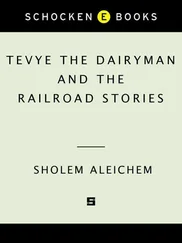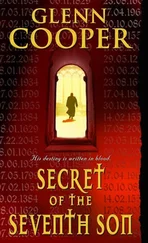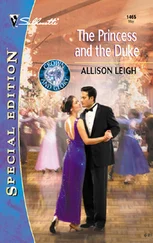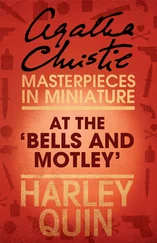Sholem Aleichem - Tevye the Dairyman and Motl the Cantor's Son
Здесь есть возможность читать онлайн «Sholem Aleichem - Tevye the Dairyman and Motl the Cantor's Son» весь текст электронной книги совершенно бесплатно (целиком полную версию без сокращений). В некоторых случаях можно слушать аудио, скачать через торрент в формате fb2 и присутствует краткое содержание. Год выпуска: 2009, ISBN: 2009, Издательство: Penguin, Жанр: Классическая проза, на английском языке. Описание произведения, (предисловие) а так же отзывы посетителей доступны на портале библиотеки ЛибКат.
- Название:Tevye the Dairyman and Motl the Cantor's Son
- Автор:
- Издательство:Penguin
- Жанр:
- Год:2009
- ISBN:978-1-101-02214-6
- Рейтинг книги:4 / 5. Голосов: 1
-
Избранное:Добавить в избранное
- Отзывы:
-
Ваша оценка:
- 80
- 1
- 2
- 3
- 4
- 5
Tevye the Dairyman and Motl the Cantor's Son: краткое содержание, описание и аннотация
Предлагаем к чтению аннотацию, описание, краткое содержание или предисловие (зависит от того, что написал сам автор книги «Tevye the Dairyman and Motl the Cantor's Son»). Если вы не нашли необходимую информацию о книге — напишите в комментариях, мы постараемся отыскать её.
Motl the Canto’s Son
Fiddler on the Roof
Tevye the Dairyman and Motl the Cantor's Son — читать онлайн бесплатно полную книгу (весь текст) целиком
Ниже представлен текст книги, разбитый по страницам. Система сохранения места последней прочитанной страницы, позволяет с удобством читать онлайн бесплатно книгу «Tevye the Dairyman and Motl the Cantor's Son», без необходимости каждый раз заново искать на чём Вы остановились. Поставьте закладку, и сможете в любой момент перейти на страницу, на которой закончили чтение.
Интервал:
Закладка:
The main themes of part 2, the American section of the book, are youth and freedom. Having concluded that only the young and unencumbered, those whose burden of shtetl culture is minimal, will find their place in America and successfully adapt to its pace and rugged individualistic ethos, 7Sholem Aleichem mobilizes Motl and Mendl in portraying America as a boys’ paradise. His two child protagonists immerse themselves in New York’s hectic ambience. They love the city’s bustle, its noisy and quick subway and elevated trains; the new American art, the cinema, fascinates them, and they choose for their hero and model Charlie Chaplin, in his classic role as a small but nimble-bodied vagabond who always gets himself into but also out of trouble. The huge metropolis never strikes these newcomers as alien and threatening — it immediately becomes their normative habitat.
It is not entirely clear in what direction Sholem Aleichem might have sent his Motl had he lived to bring the book to a close. He hints that his friend Mendl would rise to prominence as a chief organizer of the Jewish trade union movement, whereas Motl himself might flourish as a successful cartoonist. (This single instance of a future perspective suggests that the American chapters of Motl were written while the artistic discipline of the author was already in decline.) But how might the two boys, particularly our chief protagonist, arrive at their respective destinations unsullied and not coarsened? We have no answer. The book ends in the middle of the eighteenth chapter of part 2. Motl is about to throw himself into a family business, which would squeeze from him (and from every member of the family) all his energy and steal his last minutes of freedom. Would he have retained his high spirits and clarity of vision throughout many years of fierce struggle for upward mobility? Would his Peter Pan charm and Puck-like dexterity have withstood the test? Surely the agencement consisting of both naïveté and perspicacity, energy and meticulous observation, would have to be dismantled. And what about the sexual awakening that was certainly in store for this normal, full-blooded boy, whose sensuality has found expression in his craving for food and fondling (Motl enjoys sleeping in his mother’s bed)? For the time being, as far as the story goes, Motl, although aware of the role of sex in the lives of the people who surround him, is almost sexless. His is the romance of the pleasure principle played out against the backdrop not only of eternal summer but also of eternal latency. If he were to grow, latency would have to be replaced by puberty. The author would have had to sentimentalize his protagonist’s pubescence, cover it with Victorian drapery, or have him jump headlong into puerile sexuality, masturbation, erotic daydreams, and the like. In other words, Motl would have had to lose his honesty and straightforward attitude toward the facts of life, or allow it to be muddled. Both options would have destroyed the coherence of his story. Perhaps it is better for Motl to have been left unfinished as it tragically was. Unfinished, it can retain its narrative and ideological consistency and stand out as one of the author’s best and most original works.
Dan Miron New York, 2008NOTES
1 For example, the much-debated issue of whether Tevye “really” had seven daughters, since he tells about only five and barely mentions the sixth; the seventh altogether disappears. See Khone Shmeruk, “ Tevye der milkhiker —letoldoteha shel yetsira,” Ayarot ukhrakim: prakim bytsirato shel Shalom Aleichem (Jerusalem, 2000), pp. 9-32.
2 All references are to Gauts Tevye der milkhiker, vol. 5 of the so-called Folksfond edition of Sholem Aleichem’s collected works, New York, 1917, and for the purposes of literary analysis, the translations are my own.
3 See, for instance, Michael Stern, “Tevye’s Art of Quotation,” Prooftexts 6 (1986), 79–96.
4 Sigmund Freud, “Humour,” The Complete Psychological Works of Sigmund Freud, trans. James Strachey, vol. 21 (London, 1961), 159-66.
5 J. H. Brenner, “Leshalom Aleichem,” Ktavim 4 (1985), 1422-28.
6 Shmuel Niger, “Sholem Aleichem,” Vegn yidishe shrayber, vol. 1 (Warsaw, 1912), 111-12.
7 Khone Shmeruk, “Sholem Aleichem and America,” YIVO Annual of Jewish Social Research 20 (1991), 211-38.
Suggestions for Further Reading
Bal-Makhshoves (Isidore Elyasiv). “Sholem Aleichem: A Typology of His Characters.” Prooftexts 6 (1986), 7-15.
Frieden, Ken. A Century in the Life of Sholem Aleichem’s Tevye . B. G. Rudolf Lectures in Judaic Studies. Syracuse, N.Y.: Syracuse University Press, 1995.
“Tevye the Dairyman and His Daughters’ Rebellion.” In Classic Yiddish Fiction . Albany: State University of New York Press, 1995.
Hadda, Janet. “Shprintse.” In Passionate Women, Passive Men: Suicide in Yiddish Literature . Albany: State University of New York Press, 1988.
Stern, Michael. “Tevye’s Art of Quotation.” Prooftexts 6 (1986), 79–96.
Wiener, Meyer. “On Sholem Aleichem’s Humor.” Prooftexts 6 (1986), 41–54.
Wisse, Ruth R. “The Comedy of Endurance.” In The Modern Jewish Canon: A Journey Through Language and Culture . New York: The Free Press, 2000.
Wolitz, Seth. “The Americanization of Tevye or Boarding the Jewish Mayflower .” American Quarterly 40 (1988), 514-36.
DeKoven Ezrahi, Sidra. “By Train, by Ship, by Subway: Sholem Aleichem and the American Voyage of Self Invention.” In Booking Passage: Exile and Homecoming in the Modern Jewish Imagination. Berkeley: University of California Press, 2000.
Halkin, Hillel. Introduction to Menakhem Mendl and Motl, The Cantor’s Son . New Haven, Conn.: Yale University Press, 2002.
Kachuck, R. S. “On Sholem Aleichem’s Humor in English Translation.” YIVO Annual of Jewish Social Research 1 (1956-57), 39–81.
Miron, Dan. “Bouncing Back: Destruction and Recovery in Sholem Aleichem’s Motl Peyse dem khazns .” In The Image of the Shtetl . Syracuse, N.Y.: Syracuse University Press, 2000.
Shmeruk, Khone. “Sholem Aleichem and America.” YIVO Annual of Jewish Social Research 20 (1991), 211-38.
A Note on the Translations
The greatest challenge in translating Tevye is Tevye’s frequent (mis)quoting of scripture. For example, the biblical quotation “Thou shalt rejoice in thy fast” is rendered by Tevye as “Live it up, you paupers.” In this manner Tevye often insinuates his own commentary into the text, reducing its high-flown rhetoric to the bitter reality of his circumstances. This is Tevye in action, whether he is debating with God or showing off his “erudition.” My solution was to present the scriptural quotations in italics alongside Tevye’s highly personal interpretations.
I was fortunate to have the use of the glossary that is appended to an earlier Tevye translation, by the noted Hebrew and Yiddish scholar Hillel Halkin. The glossary consists of transliterations of the original biblical quotations and their exact sources and English translations. I thank Hillel Halkin for his scholarly help. Rather than have the reader flip back and forth from text to glossary, I have incorporated within the text both the quotations and Tevye’s interpretations of them. Every translator of Tevye must find a solution to this problem. I hope mine works for the reader of English.
Читать дальшеИнтервал:
Закладка:
Похожие книги на «Tevye the Dairyman and Motl the Cantor's Son»
Представляем Вашему вниманию похожие книги на «Tevye the Dairyman and Motl the Cantor's Son» списком для выбора. Мы отобрали схожую по названию и смыслу литературу в надежде предоставить читателям больше вариантов отыскать новые, интересные, ещё непрочитанные произведения.
Обсуждение, отзывы о книге «Tevye the Dairyman and Motl the Cantor's Son» и просто собственные мнения читателей. Оставьте ваши комментарии, напишите, что Вы думаете о произведении, его смысле или главных героях. Укажите что конкретно понравилось, а что нет, и почему Вы так считаете.












